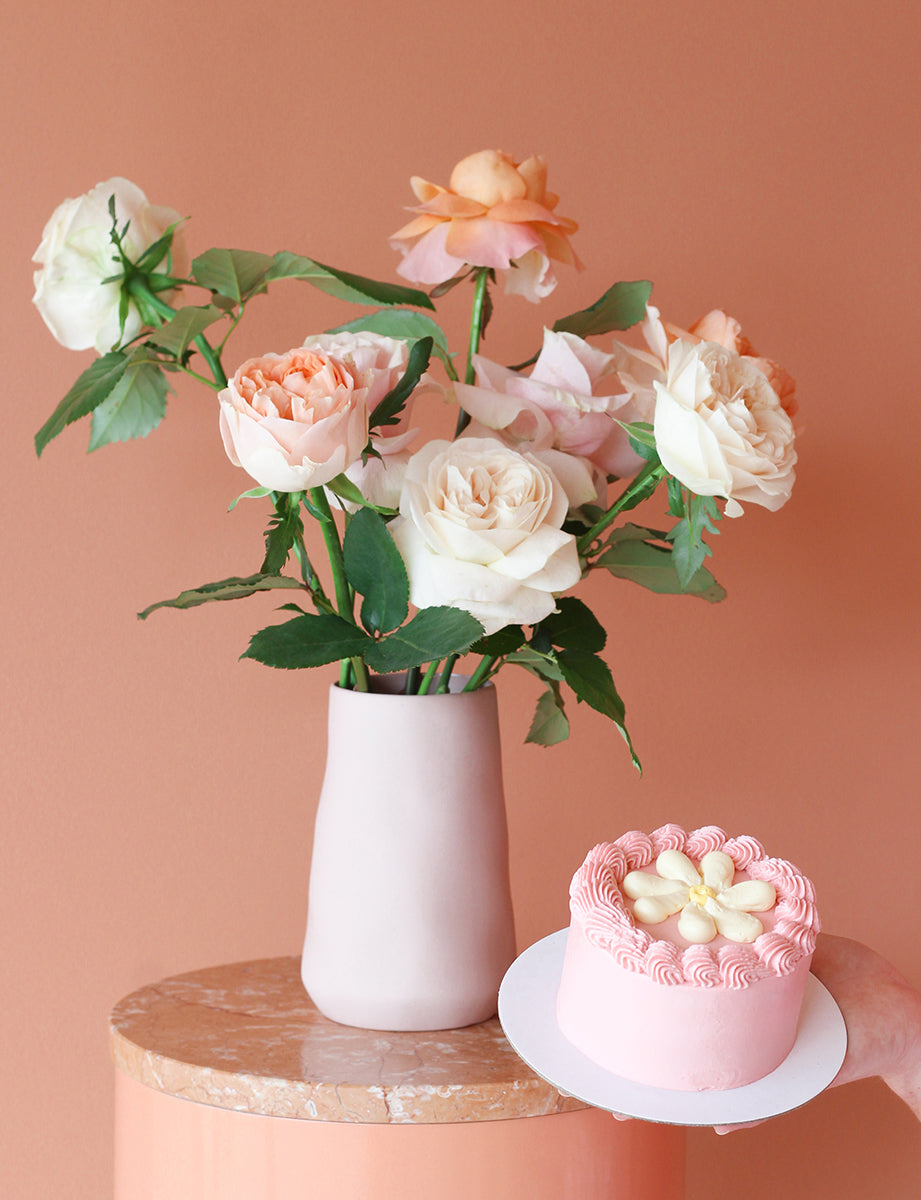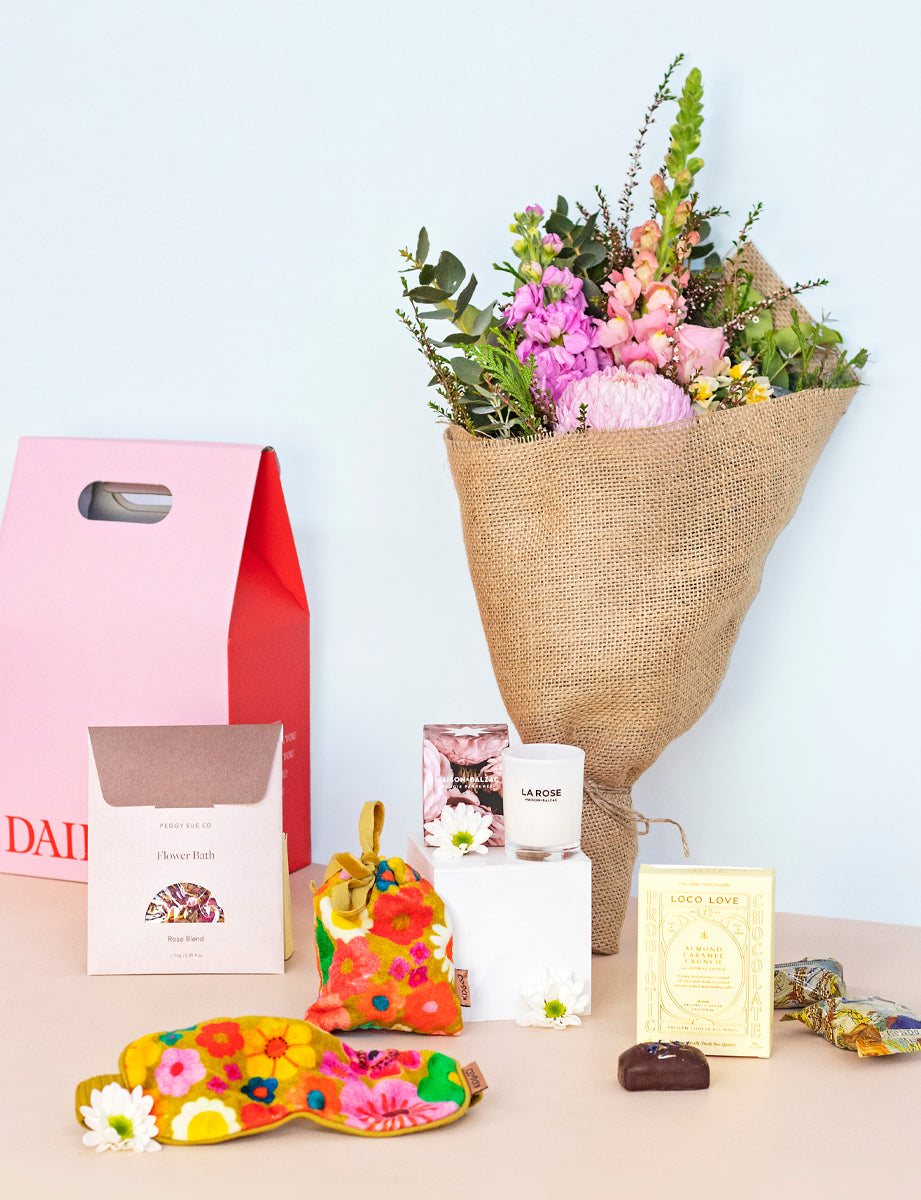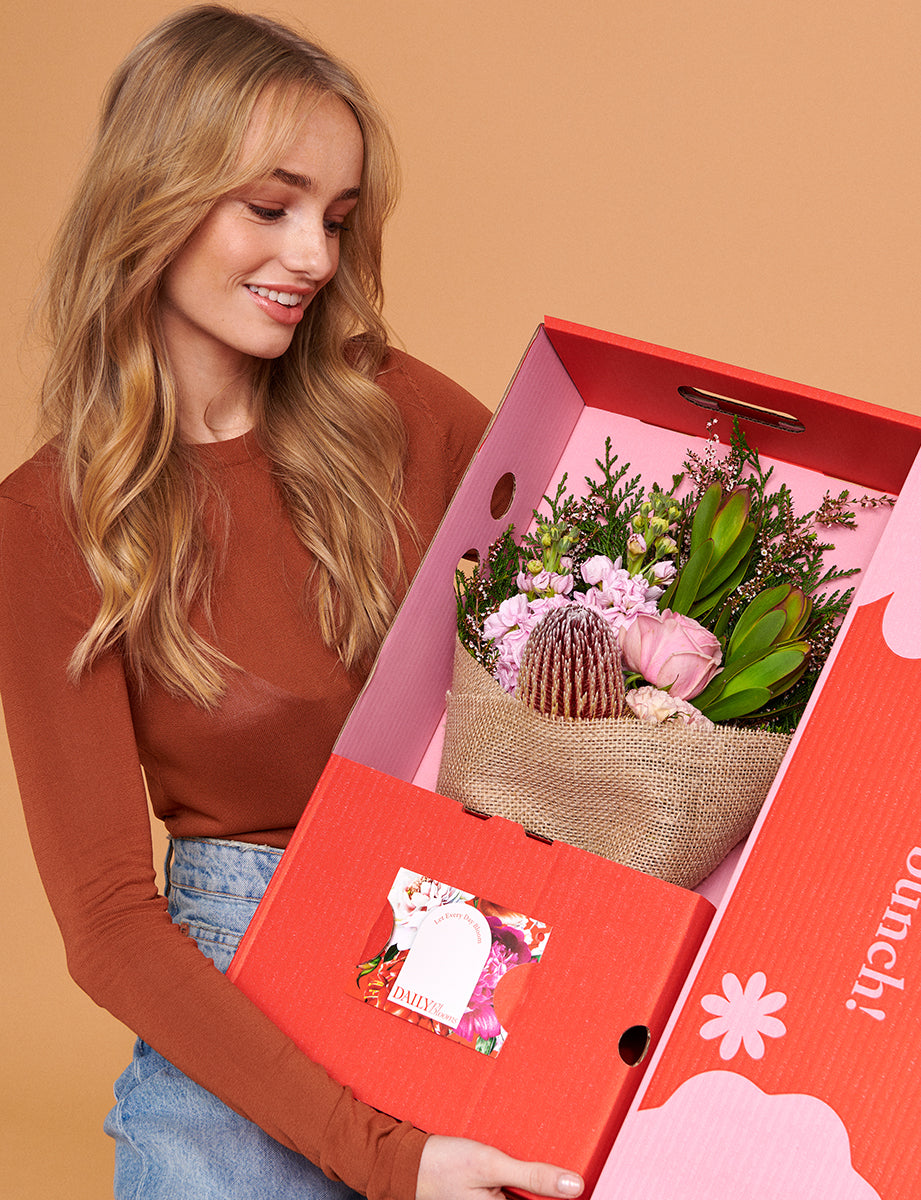

- Keep the potting soil moist, not too wet or too dry (simply poke your finger 5-7 cm into the soil to give you a better indication, this works well for smaller potted plants)
- Make sure your plant pot has drainage holes at the bottom to prevent root rot
- Pop your plant near a light source (natural or artificial) to promote photosynthesis (which allows it to grow and flourish)
- Do specific research on your brand new plant so you can give it the best care

Peace Lily (AKA Spathiphyllum Wallisii)
A popular plant for gift giving for good reason, the Peace Lily is a sign of hope, peace and prosperity.
Peace Lilies enjoy bright indirect light and can tolerate most locations inside the home – just make sure it’s out of direct sunlight, away from cold draughts and heat sources. They’re also the ideal plant for the bathroom, as it’s a warm and humid environment which helps keep the soil moist.
Like most plants, they need regular watering but if you’re not too sure if you’re under or overdoing it, Peace Lilies will tell you in the most dramatic fashion. If you notice droopy leaves, just give your Peace Lily a good watering and watch as they magically perk up in no time.
Speaking of leaves, if you notice they’re yellow, make sure you remove them to promote new growth. Yellow leaves are also a sign of overwatering, so hold off on the watering and see if it makes a difference. Brown edges are also a common issue which might be due to a variety of reasons, but if you notice that its location is sunnier than usual, just relocate it to a shadier (less light-filled room).

Raindrop (AKA Peperomia Polybotrya)
Whether you think its leaves resemble a raindrop or heart, the Raindrop is a charming and low-maintenance plant that’s easy to fall in love with.
Petite in size, it makes the perfect green addition to smaller corners and spaces. Like the Peace Lily, Raindrops love humidity and are suited next to a steamy shower with bright filtered light. Make sure you avoid direct sun as it can burn the leaves. If it’s not getting enough light, you’ll notice it getting leggy (plant code for long stems with few leaves at the top). The solution is to pop it in a more suitable spot where it can receive enough sunlight, so it doesn’t have to stretch.
With Raindrops, a little effort goes a long way. And understandably, us plant parents can get a bit too enthusiastic with watering. Raindrops store water in their stems and leaves, so it’s common to overwater them. Notice yellowing or wilting leaves, rotting stalks or waterlogged soil? It’s time to stop and let the soil completely dry out before you restart your watering routine.

Moonlight (AKA Peperomia Caperata)
With a dreamy name like Moonlight and a unique green-grey foliage, you’ll be seeing stars with this easy to care for house plant.
Unlike the Peace Lily and Raindrop, Moonlights don't require bright indirect sunlight and do quite well in low levels of light, making it the perfect plant for the shadier corners of your home.
Similar to the Raindrop, Moonlight plants are susceptible to overwatering, so make sure the topsoil is dry before you water again. An easy way to measure this is to poke your finger about 5-7 cm into the soil and check the moisture. If it’s dry, water it and if it’s not, leave it alone. It’s important you allow the soil to dry out in between watering to avoid root rot. So if in doubt, withhold the water and walk away (p.s we know it’s hard!).






0 comments